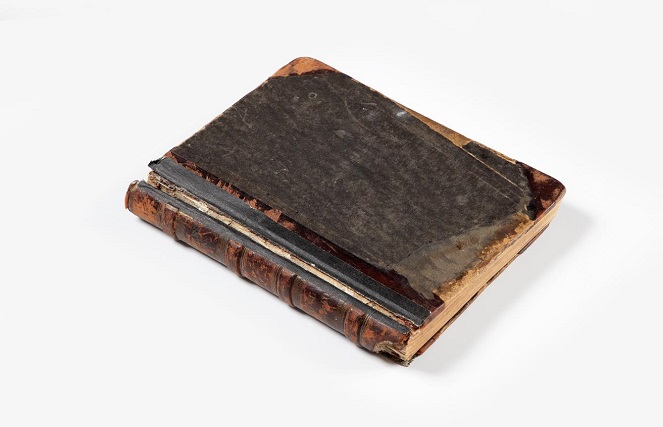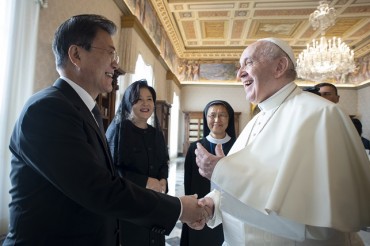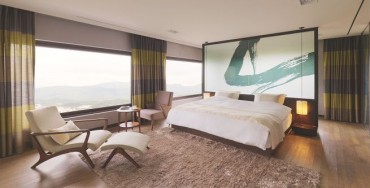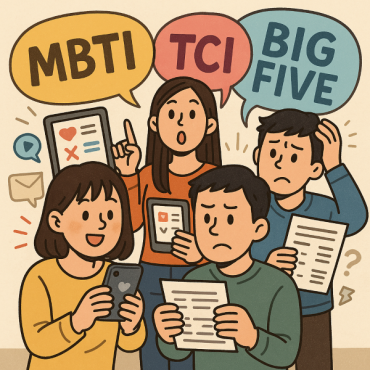
This photo provided by the Overseas Korean Cultural Heritage Foundation shows a list of hundreds of foreigners presumed to have purchased Korean cultural assets from 1930s and 1950s at an antique shop in Seoul.
SEOUL, Dec. 19 (Korea Bizwire) — A list of hundreds of foreigners, including American author and activist Helen Keller, presumed to have purchased Korean cultural assets from an antique shop in Seoul from the 1930s to the 1950s was unveiled Monday.
The customer list is expected to be of great help to future research of Korean art as it provides clues as to how the cultural assets were brought out of the country.
The book was among the 60 items that have been recently donated by Robert Mattielli, a 97-year-old American who lived as an artist and teacher in Korea for three decades starting in 1958, the Overseas Korean Cultural Heritage Foundation said.
Mattielli is known to Koreans for his role in the repatriation of an 18th-century Korean Buddhist painting, stolen about 50 years ago, to South Korea in 2016.
The painting, called “Obuldo” in Korean, a depiction of the Five Buddhas, was stolen from Songgwang Temple in Suncheon, 415 kilometers southwest of Seoul, in the early 1970s.
He, who also worked as a civilian employee of the U.S. Army in Korea, avidly collected Korean arts and crafts during his stay in Seoul. The number of Korean cultural items he gathered in Korea together with his wife Sandra Mattielli reached 1,946.
After returning to their home country, the couple donated or entrusted their collection to museums such as the Portland Art Museum, the Jordan Schnitzer Museum of Art at the University of Oregon and the Seattle Art Museum.
The list known to be kept by Samuel Lee, who ran an antique store in central Seoul, contains details of his sales of Korean cultural assets for 22 years from 1936 to 1958.
According to Mattielli, Lee studied at the University of Michigan in the U.S. and sold Korean arts and antiques mainly to foreigners in Korea using his fluent English skills.
The book has names and addresses of Western and Japanese customers who bought items from the store as well as when and what they purchased.

This photo provided by the Overseas Korean Cultural Heritage Foundation shows a list of hundreds of foreigners presumed to have purchased Korean cultural assets from 1930s and 1950s at an antique shop in Seoul.
Among the customers was Helen Adams Keller (1880-1968), a renowned deafblind American author and political activist.
Keller visited Korea to lecture in big cities such as Seoul and Pyongyang in July 1937, when the country was under the Japanese colonial rule. She bought a writing desk from the store during the trip, according to the book.
“This book is the largest known list of foreigners who purchased Korean cultural assets,” a foundation official said, asking not to be named.
Also among the donated materials were 58 business cards he received from stores that sold Korean art mainly to foreigners during his stay in Korea and a leaflet on an exhibition of art pieces by Park Soo-keun, one of South Korea’s most celebrated modern art painters, in 1962.
“If we track related information, we will be able to find out how Korean art (or cultural assets) went abroad in the 1960s and 1980s,” a foundation official said of the business cards.
The leaflet shows the exhibit held at a library of the U.S. Eighth Army featured 11 more paintings than previously known.
Seo Seong-rok, a professor of Andong National University in Andong who has studied Park’s exhibitions, rated highly of the leaflet’s historical value.
“The list of additional 11 items is information necessary to restore all the artworks shown at the exhibition,” he said.
(Yonhap)






